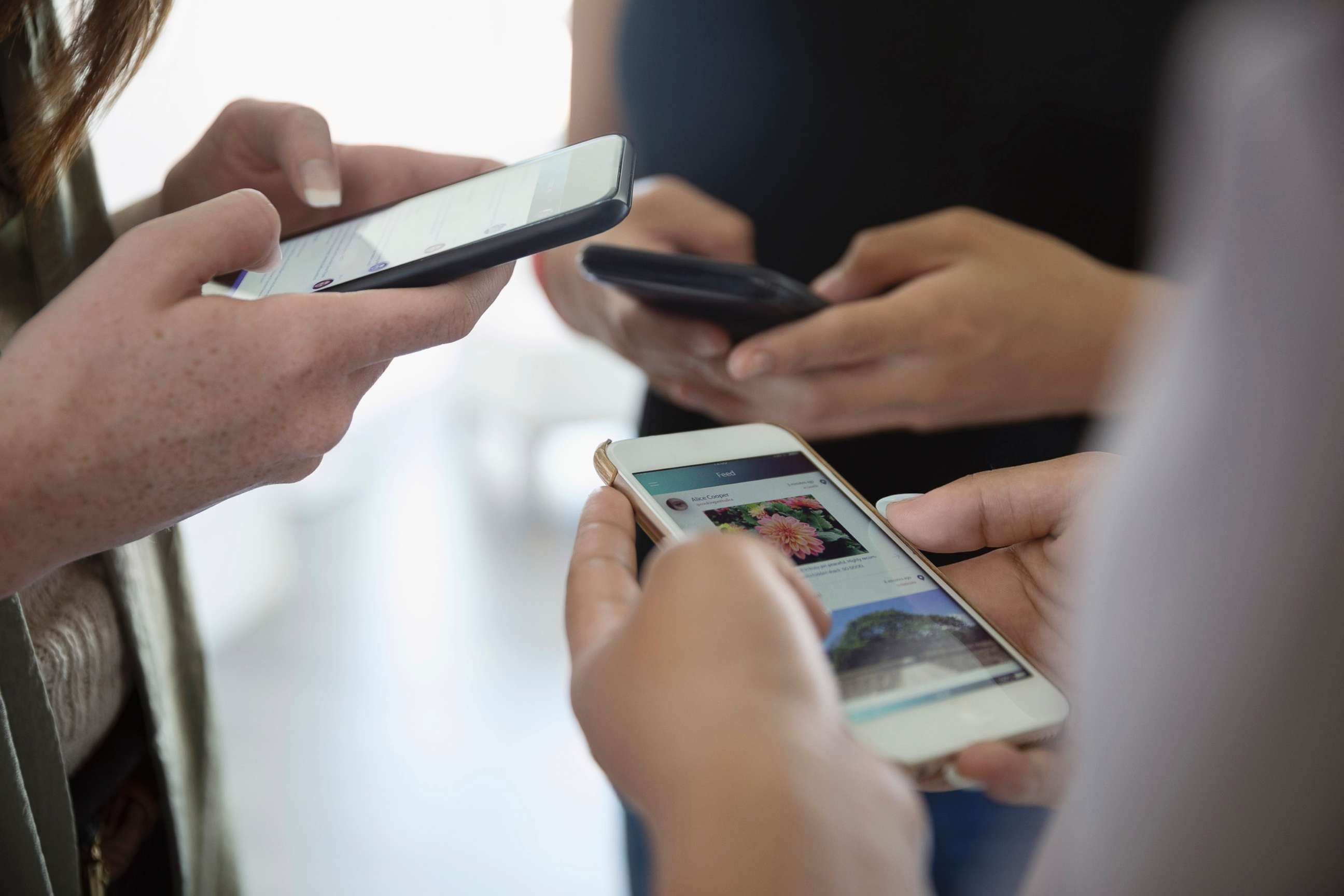These tech specialists say some social media companies are watching your every swipe to keep you on your device
"People don't realize how much of themselves they give away."
Swipe. Swipe. Swipe.
Pause, look at photo. Swipe. Pause, watch video. Swipe.
You may not even realize it, but some tech specialists say there are companies taking note of every movement you make inside their apps or websites to keep you online.
“People don't realize how much of themselves they give away” when users interact with apps, said Dalton Combs, a neurobiologist. “In the way that you swipe on a screen, you reveal a huge amount about your personality and your current psychological state.
“You pause a little too long and you’re telling your phone something about what you want,” he added. “The war over human attention is going to continue to intensify.”
Watch the full two-hour special report "ScreenTime: Diane Sawyer Reporting" THIS FRIDAY, May 3, at 8 p.m. on ABC.
Combs and Matt Mayberry, a behavioral designer, work for an artificial intelligence company called Boundless Mind. They are artificial intelligence experts who help companies design apps and websites that use behavioral science to engage consumers more efficiently.“What we're helping companies do is respond to that kind of psychology, and use the phone to read someone's mind,” Combs said. “So in the same way that when you're having a conversation with someone it's really easy for you to pick up on their mood, the phone can do the same thing. Not a lot of companies are doing it yet, but that sort of responsiveness to the user's mood can have a really big impact on how much the user likes the interaction, how likely they are to do it again, all those sorts of things.”

Combs and Mayberry demonstrated multiple ways we fall into the trap of staying on our devices. Aside from notifications, several platforms like Pinterest, Instagram and Twitter allow users to scroll endlessly, continuing to load more content, without reaching a stopping point. Once you finish watching one video on YouTube, it immediately autoplays to the next video to keep users watching without stopping.
“We never get that stopping cue,” Combs said. “We never get the signal saying, ‘I’ve probably been on Twitter long enough now’ and by design. It’s designed to make sure you never hit a bottom.”
They said some companies can track different ways users use their fingers to scroll -- and even how they hold their phones.“The way you move your finger across your phone when you're swiping is different depending on your mood,” he added. “When you're in a bad mood, people's voice get tight, and they hold their shoulders differently. You also swipe your phone differently, and you also hold your phone differently. And all of that can be inferred on your phone in real time. So your phone can tell what mood you're in.”
Combs said companies might use the information to prompt users, based on their habits, with easier pathways to products or features they determine the user may be interested in.“If you had a social media company and you were looking at this sort of information, if you could tell that the person was searching for something in particular, you could prompt them with a more efficient way to search,” Combs said. “So you can infer their psychological state from this kinda stuff. And you can tell, you know, if they're in a bad mood. So another thing about the way our brains learn habits is we learn habits in response to certain emotional states. And so by telling what kind of emotional state you're in, the app can know to respond to you in a different way.”
If companies get the sense that you’ve paused on a specific item, Mayberry said, they will target you with similar content.
For example, Mayberry said at one point he watched a video about a Turkish chef and then his Instagram feed was filled with photos and references to chefs in Turkey.
“Now in my feed, when I see them, and my thumb runs on the screen and I pause ... and I’m saying, ‘Why are there so many Turkish chefs in my feed?’ What they’re hearing is, ‘Show more Turkish chefs because that’s all he wants to look at,'” Mayberry said. “And it’s not what I want to see anymore. It’s not why I have Instagram.”
Facebook, which owns Instagram, told ABC News in a statement, "We want people to find the time they spend on Facebook to be valuable, even if that means they spend less time overall. We're doing more to help people actively connect with others, rather than passively consuming content. That includes prioritizing posts that spark conversations and meaningful interactions between people in News Feed and offering controls that encourage intentional use and help people manage their experience."
Your mouse movements can also reveal what you’re doing online as you’re browsing or if you’re about to "x-out" of a window. For example, a retail company might be able to tell when your finger moves to close a tab and can send you a pop-up notification for a discount to keep you on its page.

In addition, some advertisers design ads with intentional details designed to influence the user to click on them.
“Somebody will design an ad that looks like there's a fly on your screen or a single piece of hair. And you'll go to swipe away the piece of hair, but what you're actually doing is interacting with the ad,” Mayberry said. “And you've now earned the advertiser money… and now you've been cartwheeled into an ad experience that you never intended to do.”
Google, which owns YouTube, told ABC News in a statement, "We want to help people better understand their tech usage, focus on what matters most, disconnect when needed, and create healthy habits. That’s why we've launched a number of ways for people to manage their digital wellbeing on YouTube: time watched profile, take a break reminder, notification digest, and disable notification sounds and vibrations at certain hours. Separately, for kids under 13, we also have YouTube Kids, which offers parents controls, including the ability to set a timer, or hand pick the channels."
Jim Steyer, a Stanford professor and the founder of Common Sense Media, a non-profit organization that provides independent reviews of all types of media, including social media and promotes reduced screen family time, said it is the user’s responsibility to control how and how often they use their devices.
But he also argues that tech companies should be held accountable for the incentives he said they build into their apps.
“There are a 1,000 engineers sitting behind a screen at some of the large technology companies figuring out the most effective way to get you there, and keep you there, because that’s how they make money,” he said. “We hold alcohol companies and tobacco companies responsible for the downsides of their products.”
Combs suggests users set boundaries for themselves and their phone use.
“The number one piece of advice I give people is be really thoughtful about the habits you bring into your life, because once they're in they're there,” Combs said. “At a biological level, it's a thousand times easier to make a habit than to break a habit.”




